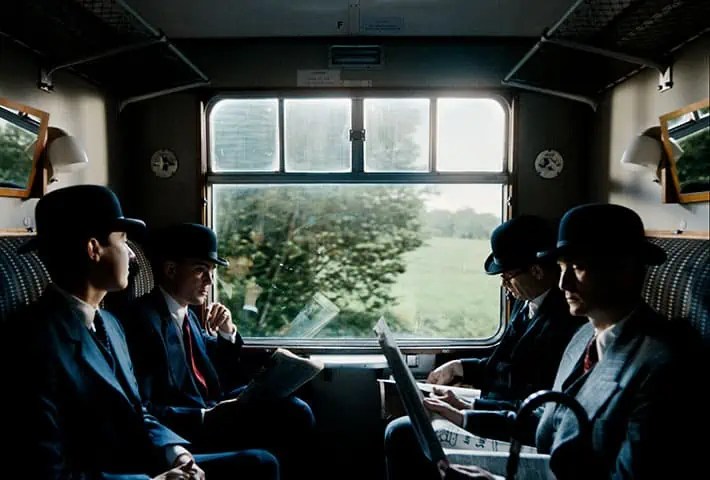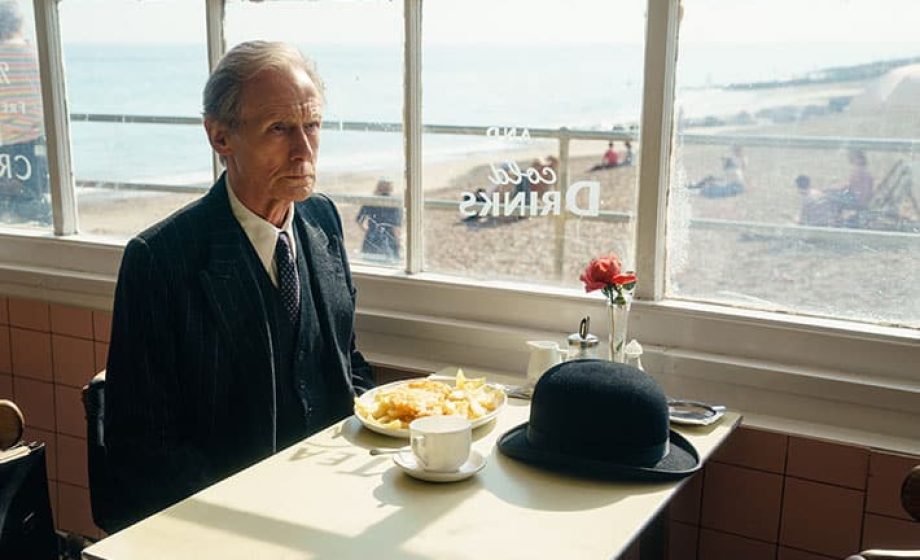Adaptations have been the bread and butter of the cinematic world for some time now. Whether it be from hit game series to a hit TV series via Last of Us or a legendary play in the hands of a filmic master a la Joel Coen’s Macbeth adaptation, it’s an overly familiar saturation of the market. And while at times this can feel like a ping pong of the same ideas across mediums, sometimes a story’s shape is so timeless and significant that it feels poignant in any instance—and such is the case with Living.
Living (2022), directed by Oliver Hermanus and written by Kazuo Ishiguro, is an adaptation of iconic Japanese filmmaker Akira Kurosawa’s 1953 drama Ikiru (“to live”). In turn, Ikiru was semi-inspired by Russian writer Leo Tolstoy’s The Death of Ivan Ilyich. What all of these works share are an aged and comfortably well-to-do aging bureaucrat facing mortality and a shift in perspective for how he has lived. One can easily see how well such a story sat in 19th-century Russian literature as well as early Japanese cinema, and Living places us in the equally appropriate setting of 1953 London following the end of Mr. Williams’ life.

Performed heartbreakingly subtly by Bill Nighy, Mr. Williams discovers he has terminal cancer and less than a year to live. While at first struggling with suicidal plans, “living a little”, and communicating this news to anyone in his life, Williams’ journey is one of stepping outside the cycle he has set his life in. Inspired by the vivacity and kindness of former employee Miss Harris, filled with life by Aimee Lou Wood, Williams chooses to spend what’s left of his life bringing some small good to the world—completing the Sisyphean task of pushing forth a group’s request for a children’s playground through bureaucratic channels.
Living feels both on its surface and in the structure of its presentation to fulfil the role of an early 20th-century melodrama. From its trappings of the comedically recursive bureaucracy shown in the stunning County Hall to its battle with the stiff upper lip, it’s easy to see the story as a bit dated. But Hermanus executes a perfect level of introspection in his direction that pokes holes in a monolithic wall of stoicism that is timelessly relevant. Humanity is pressing forth against that barrier every second.

The visual approach of the film further places it beyond the traditional roots of its story. With cinematography by Jamie D. Ramsay, there are moments of beautiful symmetry found that maintain the terse feeling of 1953 London, and in equal measure, there are evocative framings and spacings that drive the feelings of shifting paradigms and emergent fear in Mr. Williams’ dreaded sentence. Throughout a bender early on, led by the incredibly impactful (and unfortunately a bit underused) Tom Burke as insomniac erotica writer Mr. Sutherland, we see side-by-side the jubilation and coziness of swinging bars and burlesques and the stark dread that falls across these hedonistic scenes and Burke’s face—it’s a visual dichotomy with a lasting impression.
Ripe with a secret garden of compassion and realistic trials and tribulations, Living slowly brings us through the alleys, streets, and cold walls of London to find something deeply alive amidst the stone. As a parable of rekindling humanity in our easily jaded and numbed minds, this understated drama puts to us the simplest and most important question possible: how do we want to live our lives?





